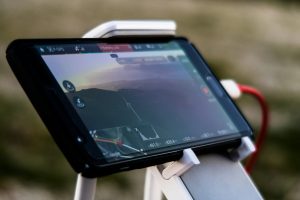Breakthrough Robotics Innovations Changing Industries Overnight
Robots have long been at the forefront of innovation, enabling industries to become more efficient and productive. From manufacturing to healthcare, robots have revolutionized the way businesses operate, saving time and resources while also improving safety and accuracy. However, in recent years, we have witnessed breakthrough robotics innovations that are not just improving processes, but revolutionizing entire industries overnight. These advancements are paving the way for a future where robots play an even more integral role in our daily lives.
The Rise of Collaborative Robots
Gone are the days of large, bulky robots confined to cages on the factory floor. Collaborative robots or “cobots” have emerged as a game-changer in the manufacturing industry. These robots are designed to work alongside humans, performing repetitive and dangerous tasks while offering a safe and seamless experience. With sensors and cameras, cobots can detect and avoid obstacles, making their integration into existing processes much easier. This breakthrough innovation has led to a significant increase in productivity and has also created a safer working environment for employees.
Cobots in Healthcare
The use of robots in healthcare is not a new concept, but recent breakthroughs have taken it to a whole new level. With the advancement of artificial intelligence, robots can now perform complex surgeries with precision and minimal risk. This has not only reduced the time and cost of surgeries but also opened up opportunities for remote or telesurgery. Additionally, medical robots are being used in rehabilitation, patient care and assistance, freeing up healthcare professionals to focus on more critical tasks. These innovations are changing the face of healthcare and improving patient outcomes in ways we never thought possible.
Warehouse Automation
The rise of e-commerce has put immense pressure on warehouses to operate at maximum efficiency. This demand has led to the introduction of innovative robots that can pick, pack, and ship items without human intervention. These robots use AI and machine learning to optimize their processes, making them more efficient over time. With the ability to work around the clock, warehouse robots can handle a higher volume of orders and ultimately increase profits for businesses. This breakthrough innovation has significantly reduced the need for manual labor in warehouses and is changing the game for the entire logistics industry.
The Automation of Agriculture
Agriculture is a vital industry for human survival, but it is also one of the most labor-intensive and time-consuming. With robots taking on tasks such as planting and harvesting, farmers can now focus on other crucial aspects of farming, such as planning and strategizing. These robots use precision technology to perform tasks with accuracy and consistency, leading to higher crop yields and reduced waste. This breakthrough is not only revolutionizing the way we produce food but also addressing the issue of labor shortages in the agriculture industry.
The Future of Delivery
With the rise of online shopping, the demand for fast and efficient delivery has never been higher. Breakthrough innovations in robotics have paved the way for the use of drones and autonomous vehicles in the delivery industry. These robots can navigate through traffic and deliver packages to customers’ doorsteps in a matter of minutes. With e-commerce sales projected to continue growing, the use of robots in delivery is expected to become even more prevalent, changing the way we shop and receive goods.
Challenges and Opportunities
As with any new technology, there are challenges that come with the adoption of breakthrough robotics innovations. The most significant concern is the fear of robots replacing human jobs. However, with the automation of more labor-intensive tasks, it frees up humans to focus on higher-skilled and more creative roles. This shift creates new job opportunities in fields such as robotics engineering, programming, and maintenance. Additionally, the implementation of robots can also reduce injuries and health risks for workers, creating a safer workplace environment.
In conclusion, breakthrough robotics innovations are transforming industries overnight and opening up endless possibilities for the future. From collaborative robots to automation in agriculture and delivery, these advancements are shaping the way we live and work. As technology continues to evolve, we can expect even more breakthroughs that will push the boundaries of what is possible with robotics.











